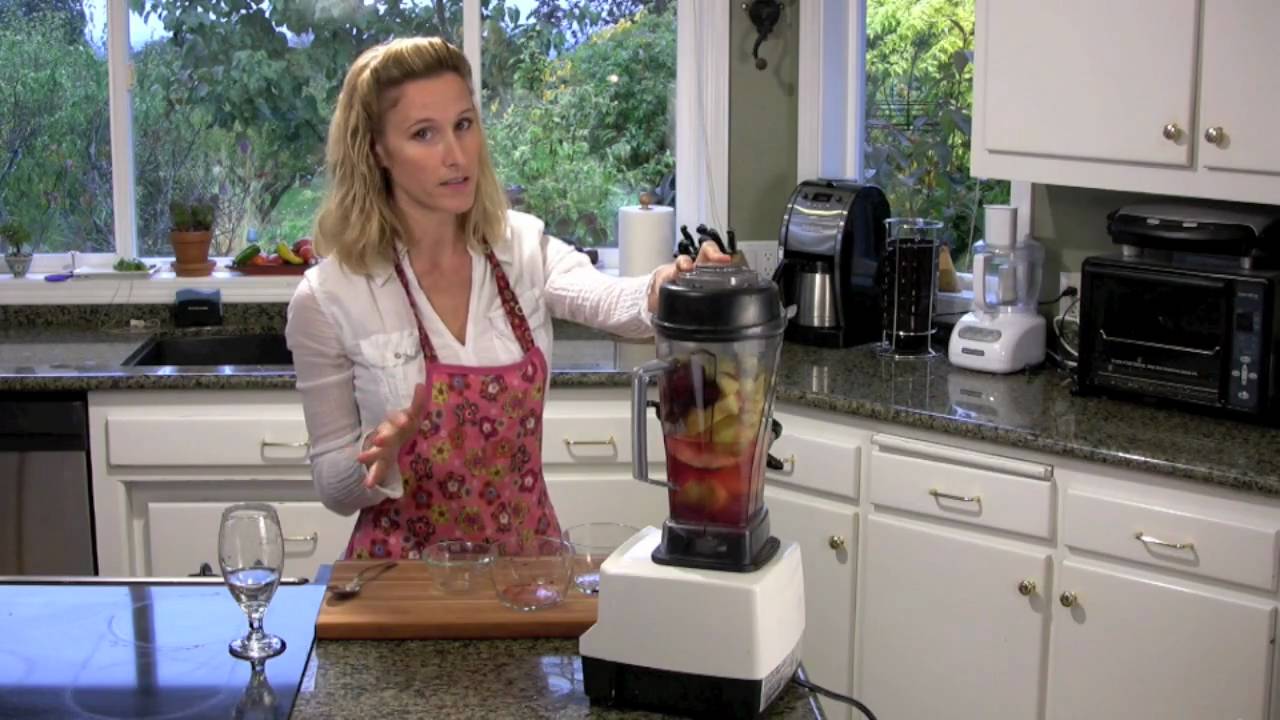

Articles
How To Make Beet Juice With A Blender
Modified: December 6, 2023
Learn how to make nutritious beet juice using a blender. Follow our step-by-step guide for easy and delicious homemade beet juice recipes. Find more articles on juicing tips and techniques.
(Many of the links in this article redirect to a specific reviewed product. Your purchase of these products through affiliate links helps to generate commission for Storables.com, at no extra cost. Learn more)
Introduction
Beet juice has gained popularity in recent years due to its numerous health benefits and vibrant color. Packed with essential nutrients, beet juice is known for its ability to support heart health, boost exercise performance, and improve digestion. Plus, it offers a refreshing and naturally sweet flavor that can be enjoyed on its own or combined with other fruits and vegetables.
While you can easily purchase beet juice from stores or juice bars, making your own beet juice at home using a blender allows you to have complete control over the ingredients and ensures that you’re getting the freshest and most nutrient-dense juice possible. In this article, we’ll guide you through the step-by-step process of making beet juice with a blender.
But first, let’s explore some of the incredible benefits that beet juice has to offer.
Key Takeaways:
- Making beet juice with a blender is a simple and rewarding process that allows you to enjoy the numerous health benefits of this vibrant vegetable. From supporting heart health to boosting exercise performance, homemade beet juice offers a delicious way to enhance your overall well-being.
- By carefully selecting, preparing, and flavoring your beet juice, you can create a personalized and nutritious beverage that can be enjoyed immediately or stored for later consumption. Embrace the creativity and versatility of homemade beet juice to elevate your health and vitality.
Read more: How To Make Pineapple Juice With Blender
Benefits of Beet Juice
Beets are rich in essential vitamins, minerals, and antioxidants that contribute to overall health and well-being. Drinking beet juice regularly can have several positive effects on the body:
- Heart Health: Beet juice is known for its high nitrate content, which gets converted into nitric oxide in the body. Nitric oxide helps relax and dilate blood vessels, improving blood flow and reducing the risk of high blood pressure and heart disease.
- Exercise Performance: The natural nitrates in beet juice can enhance athletic performance by increasing stamina and oxygen flow to the muscles. This can lead to improved endurance, reduced fatigue, and better overall exercise performance.
- Detoxification: Beets contain betaine, a compound that supports liver function and helps remove toxins from the body. Drinking beet juice can aid in detoxification and promote a healthy liver.
- Digestive Health: Beet juice is rich in dietary fiber, which promotes regular bowel movements and aids in digestion. It can help prevent constipation and maintain a healthy digestive system.
- Immune Boost: Beets are packed with immune-boosting vitamins like vitamin C and antioxidants that help strengthen the immune system, protecting the body against infections and diseases.
Now that you’re aware of the incredible benefits of beet juice, let’s dive into the process of making it at home using a blender.
Key Takeaways:
- Making beet juice with a blender is a simple and rewarding process that allows you to enjoy the numerous health benefits of this vibrant vegetable. From supporting heart health to boosting exercise performance, homemade beet juice offers a delicious way to enhance your overall well-being.
- By carefully selecting, preparing, and flavoring your beet juice, you can create a personalized and nutritious beverage that can be enjoyed immediately or stored for later consumption. Embrace the creativity and versatility of homemade beet juice to elevate your health and vitality.
Read more: How To Make Pineapple Juice With Blender
Benefits of Beet Juice
Beet juice is not only delicious but also offers a myriad of benefits for your overall health and well-being. Here are some of the key advantages of incorporating beet juice into your diet:
1. Boosts Exercise Performance
Drinking beet juice before a workout can significantly enhance your exercise performance. This is due to the high nitrate content in beets, which gets converted into nitric oxide in the body. Nitric oxide helps improve blood flow and oxygen delivery to the muscles, resulting in increased endurance, reduced fatigue, and better overall athletic performance.
2. Supports Heart Health
Beet juice is a heart-healthy beverage, thanks to its rich nitrate content. Nitric oxide helps relax and dilate blood vessels, thereby improving blood flow and lowering blood pressure. Regular consumption of beet juice has been shown to reduce the risk of cardiovascular diseases, including heart attacks and strokes.
Read more: How To Make Celery Juice With A Blender
3. Enhances Detoxification
The natural compounds present in beets, such as betaine, help support liver function and aid in detoxification. Betaine helps remove toxins and waste products from the liver, promoting its optimal functioning. Including beet juice in your diet can help cleanse your liver and support the overall detoxification process.
4. Supports Digestive Health
Beet juice is rich in dietary fiber, which aids in digestion and promotes a healthy digestive system. Fiber adds bulk to the stool, preventing constipation and promoting regular bowel movements. Drinking beet juice can help maintain a healthy gut and prevent digestive issues.
5. Boosts Immune Function
Beet juice is packed with immune-boosting nutrients like vitamin C and antioxidants. These compounds help strengthen the immune system, protecting the body against infections and diseases. Including beet juice in your diet can give your immune system a much-needed boost and help keep you healthy.
6. Supports Brain Health
Studies have shown that the natural nitrates present in beets and beet juice can improve cognitive function and blood flow to the brain. This can enhance mental performance, increase focus, and delay the onset of age-related cognitive decline.
Read more: How To Make Carrot Juice In Blender
7. Provides Essential Nutrients
Beet juice is rich in essential vitamins and minerals, including folate, potassium, vitamin C, and iron. These nutrients are crucial for maintaining optimal health, supporting cellular function, and boosting energy levels.
With all these incredible benefits, it’s no wonder why beet juice has gained such popularity as a powerful superfood. Incorporating freshly made beet juice into your daily routine can have a significant positive impact on your overall health and vitality.
Choosing and Preparing Beets
When it comes to making beet juice, selecting the right beets is important to ensure a flavorful and nutritious beverage. Here are some tips to help you choose and prepare beets for juicing:
1. Choosing Fresh Beets
Look for beets that are firm, smooth, and have vibrant colors. Avoid beets that are soft, shriveled, or have blemishes. The greens of the beets should be fresh and vibrant, indicating that they are recently harvested. Opt for organic beets whenever possible to minimize exposure to pesticides and other chemicals.
2. Optimal Beet Size
Medium-sized beets are ideal for juicing as they are easier to handle and blend. Avoid using extremely large beets, as they may have a woody texture and can be challenging to blend smoothly.
Read more: How To Make Tomato Juice In A Blender?
3. Cleaning and Peeling the Beets
Before juicing, it’s important to wash the beets thoroughly to remove any dirt and debris. Start by gently scrubbing them under cool running water. You may use a vegetable brush to remove any stubborn dirt. Avoid peeling the beets unless they have a thick, rough skin. Most of the nutrients are concentrated in the skin, so leaving it intact will maximize the nutritional value of the juice. However, if the skin is excessively dirty or the beets are not organic, peeling them is recommended.
4. Trimming and Discarding the Greens
If your beets come with their greens still attached, it’s best to trim them off. Although beet greens are nutritious and can be used in other recipes, they can make the juice taste bitter. Use a sharp knife to trim the greens, leaving about an inch of the stem attached to the beet.
5. Cutting the Beets
Once your beets are cleaned and trimmed, you can start cutting them into smaller pieces. This will help the blender break down the beets more easily, ensuring a smoother and well-blended juice. Cut the beets into cubes or slices, depending on the size of your blender. Smaller pieces are preferred for a more efficient blending process.
By carefully selecting and preparing your beets, you’ll ensure that the juice retains its freshness, vibrant color, and optimal nutritional value. With the beets ready, it’s time to move on to the next step: making beet juice using a blender.
Making Beet Juice with a Blender
Making beet juice with a blender is a simple and convenient process that allows you to enjoy the freshest and most nutrient-rich juice possible. Here’s a step-by-step guide to help you make delicious beet juice at home:
Read more: How To Make Orange Juice In A Blender
Step 1: Washing and Peeling the Beets
Start by thoroughly washing your beets under cool running water to remove any dirt or debris. If desired, peel the beets using a vegetable peeler or a knife. Remember that leaving the skin on will maximize the nutritional value of the juice, so only peel the beets if necessary.
Step 2: Cutting the Beets into Small Pieces
Once the beets are cleaned and peeled, cut them into smaller pieces. This will make it easier for your blender to process the beets into a smooth juice. Aim for uniform pieces, roughly one inch in size, to ensure even blending and consistent texture.
Step 3: Blending the Beets with Water
Place the beet pieces into your blender and add water to facilitate blending. The amount of water will depend on the desired consistency of your juice. Start with a small amount and add more as needed. For a thicker and more concentrated juice, use less water; for a lighter and more diluted juice, add more water.
Step 4: Straining the Juice
Once the beets and water are in the blender, secure the lid and blend on high speed until the mixture is smooth and well-combined. Depending on the power of your blender, this may take a few minutes. You may have to stop and scrape down the sides of the blender occasionally to ensure even blending.
To achieve a finer consistency, strain the blended mixture through a fine-mesh sieve or cheesecloth. This step is optional, but it helps remove any remaining pulp or fibrous bits, resulting in a smoother juice. If you prefer a pulp-free juice, strain it carefully.
Read more: How To Make Kale Juice In A Blender
Step 5: Optional Additions for Flavor
At this point, your beet juice is ready to be enjoyed as is, but you can also add additional ingredients to enhance the flavor. For a tangy twist, squeeze in some fresh lemon juice. To sweeten the juice naturally, add a small amount of honey or maple syrup. You can also experiment with other fruits and vegetables like apples, carrots, or ginger to create unique flavor combinations.
Pour the juice into a glass or container, and your homemade beet juice is ready to be savored!
Remember to clean your blender and wash your tools promptly to avoid any staining from the vibrant beet color.
Now that you know how to make beet juice with a blender, you can enjoy this nutritious and delicious beverage whenever you desire. Let your creativity flow by adding different ingredients and flavors to suit your taste preferences. Cheers to your homemade beet juice!
Step 1: Washing and Peeling the Beets
The first step in making beet juice with a blender is to wash and, if desired, peel the beets. This crucial step ensures that your beets are clean and free from any dirt or contaminants. Here’s how to do it:
1. Start by selecting fresh beets that are firm, smooth, and have vibrant colors. Avoid beets that are soft, shriveled, or have blemishes.
2. Gently scrub the beets under cool running water to remove any dirt or debris. You can use a vegetable brush to remove stubborn dirt if needed.
3. If the beets have thick, rough skin or are not organic, you may want to peel them. However, peeling is optional, as most of the nutrients are concentrated in the beet skin. Leaving the skin intact maximizes the nutritional value of the juice.
4. To peel the beets, you can use a vegetable peeler or a knife. Hold the beet firmly and gently remove the skin in a downward motion. Take care not to remove too much of the flesh along with the skin.
5. If you choose not to peel the beets, make sure to wash them thoroughly under running water, paying extra attention to any crevices or indentations where dirt may be trapped.
6. Once the beets are washed and peeled, inspect them for any remaining dirt or blemishes. Trim off any rough ends or spots.
7. If the beets come with their greens attached, it’s best to trim them off. While beet greens are nutritious and can be used in other recipes, they can make the juice taste bitter.
8. Use a sharp knife to trim the greens, leaving about an inch of the stem attached to the beet. Discard the greens or store them separately for later use.
9. After washing and peeling the beets, pat them dry with a clean towel.
By following these steps, you’ll ensure that your beets are clean and ready to be used in the next step of making beet juice with a blender. Remember to handle the beets carefully to avoid any stains from their vibrant color, and always use a clean surface and utensils during the preparation process.
Step 2: Cutting the Beets into Small Pieces
Once you have washed and peeled the beets, the next step in making beet juice with a blender is to cut them into small pieces. This step is crucial to ensure that the beets blend smoothly and evenly, resulting in a well-textured juice. Follow these simple guidelines to cut the beets effectively:
1. Place the washed and peeled beets on a clean cutting board.
2. Use a sharp knife to trim off any remaining rough ends or spots on the beets.
3. Carefully slice the beets into smaller, manageable sections. Aim for uniform pieces that are roughly one inch in size. This will help ensure that the blender can process the beets efficiently.
4. If the beets are larger, you may need to cut them into multiple smaller pieces to ensure even blending. This is especially important if you have a less powerful blender.
5. While cutting the beets, be mindful of your fingers and use proper knife safety techniques to prevent any accidents.
6. As you cut the beets, transfer the pieces into a clean bowl or container to keep them separated.
By cutting the beets into small, uniform pieces, you’ll facilitate the blending process and help ensure a smooth and well-blended juice. This step is essential to achieve a consistent texture and allows you to extract the maximum flavors and nutrients from the beets.
Now that your beets are cut and ready, you can move on to the next step: blending them with water to create a delightful and nutritious beet juice.
Step 3: Blending the Beets with Water
Once you have prepared the beets by washing, peeling, and cutting them into small pieces, it’s time to blend them with water to create the base of your beet juice. This step is where the magic happens, as the blender will transform the beets into a smooth and vibrant juice. Here’s how to do it:
1. Transfer the cut beet pieces into your blender jug. Make sure the jug is clean and free from any residue or debris.
2. Pour in a small amount of water to start. The amount of water needed will depend on your desired juice consistency. For a thicker and more concentrated juice, use less water; for a lighter and more diluted juice, add more water.
3. Place the lid securely on the blender jug to prevent any spills or splatters.
4. Start blending the beets on high speed. The blending time will vary depending on the power of your blender and the desired smoothness of the juice. It may take a few minutes to achieve a smooth consistency.
5. If necessary, stop the blender occasionally to scrape down the sides of the jug. This will ensure that all the beet pieces are evenly blended.
6. Continue blending until the beets and water are completely combined, and the mixture is smooth and well-incorporated. The result should be a vibrant, richly colored beet juice.
7. If you prefer a pulp-free juice, you can strain the blended mixture through a fine-mesh sieve or cheesecloth. This step is optional and depends on your personal preference. Straining the juice will remove any remaining pulp or fibrous bits, resulting in a smoother and more refined texture.
8. If you choose to strain the juice, pour it slowly through the sieve or cheesecloth into a clean container. Use a spoon or spatula to gently press on the pulp to extract as much juice as possible. Discard the remaining pulp or save it for other recipes.
9. If you prefer to consume the juice with the pulp, you can skip the straining step.
Once you have blended or strained the beet mixture, you now have a delicious and nutritious base for your beet juice. You can enjoy the juice as is, or you can proceed to the next step to add additional ingredients for enhanced flavor.
Now that your beet juice base is ready, you can explore various combinations and flavors to create your own signature beet juice blend.
Read more: How To Juice With Blender
Step 4: Straining the Juice
After blending the beets with water, you have the option to strain the juice to achieve a smoother texture. Straining the juice removes any remaining pulp or fibrous bits, resulting in a more refined and velvety consistency. While this step is optional, it can enhance the overall drinking experience. Here’s how to strain the beet juice:
1. Prepare a fine-mesh sieve or a cheesecloth. Ensure that it is clean and free from any residue or debris.
2. Place the sieve or cheesecloth over a clean container or pitcher that is large enough to hold the strained juice.
3. Slowly pour the blended beet mixture into the sieve or onto the cheesecloth. Use a spoon or spatula to gently press down on the pulp to help extract the juice. The strained juice will flow through the sieve or cheesecloth, while the pulp will remain.
4. Allow the juice to strain naturally, using the back of the spoon or spatula to press on the pulp to extract as much juice as possible.
5. Continue the straining process until all the juice has passed through the sieve or cheesecloth, leaving behind the pulp.
6. Once the juice has been strained, carefully remove the sieve or cheesecloth and discard the pulp. Alternatively, you can save the pulp for other recipes or compost it.
7. Pour the freshly strained beet juice into a clean container or pitcher. You can give it a gentle stir to ensure the consistency is even throughout.
Tip:
If you prefer a juice with a bit of pulp, you can adjust the straining process to your liking. Stop the straining when you’ve reached your desired level of pulpiness, allowing some small fibers to pass through. This way, you can enjoy a bit of texture in your beet juice.
By straining the beet juice, you’ll achieve a smooth and velvety consistency that can be enjoyed on its own or mixed with other ingredients to create delicious flavor combinations. Remember to clean the sieve or cheesecloth promptly after straining, as beet juice can stain if left to dry.
Now that your beet juice is strained to perfection, it’s time to move on to the final step: adding optional ingredients for extra flavor.
Step 5: Optional Additions for Flavor
Once your freshly strained beet juice is ready, you have the opportunity to enhance its flavor by adding optional ingredients. These additions can provide a delightful twist to your beet juice and allow you to customize it to suit your taste preferences. Here are some ideas for flavor variations:
1. Citrus Zing
Add a burst of tangy freshness to your beet juice by squeezing in some fresh lemon, lime, or orange juice. Citrus fruits not only add a refreshing taste, but they also complement the earthy sweetness of the beets, creating a harmonious flavor profile.
Read more: How To Make Cabbage Juice With A Blender
2. Natural Sweeteners
If you prefer a sweeter beet juice, you can incorporate natural sweeteners like honey, maple syrup, or agave nectar. Start with a small amount and adjust to your desired level of sweetness. Remember that beets are naturally sweet, so you may not need much additional sweetener.
3. Herbs and Spices
Experiment with herbs and spices to elevate the taste of your beet juice. Consider adding a dash of fresh mint, a sprinkle of cinnamon, or a hint of ginger to add complexity and a touch of warmth to the flavor. These additions can provide a refreshing and aromatic twist to your juice.
4. Fruity Infusions
Blend your beet juice with other fruits to create unique flavor combinations. Apples, strawberries, and berries are great options that complement the earthy undertones of beets. Blend them together with the beet juice for a fruity and vibrant infusion.
5. Veggie Combinations
If you enjoy the savory side of juices, consider adding other vegetables to your beet juice. Carrots, celery, or cucumber can add a crisp and refreshing touch to the overall flavor. These combinations can provide a well-rounded and nutritious drinking experience.
6. Experiment and Personalize
Feel free to get creative and experiment with different flavor combinations that suit your taste preferences. Don’t be afraid to try unique ingredients or even combine multiple flavors for a truly personalized beet juice experience.
Remember to add the optional ingredients in small amounts and taste as you go, adjusting to suit your liking. This way, you can create a beet juice that is perfectly balanced and tailored to your taste buds.
Once you have added the optional ingredients, give the beet juice a gentle stir to combine everything evenly. Take a moment to appreciate the beautiful color, aroma, and taste that you have created.
Your beet juice is now complete and ready to be enjoyed! Pour it into a glass, add ice if desired, and savor the vibrant and nourishing flavors.
Cheers to your homemade beet juice creation!
Serving and Storing Beet Juice
Now that you have prepared and flavored your delicious beet juice, it’s time to serve and enjoy it. Here are some tips for serving and storing your homemade beet juice:
Serving Beet Juice
– Pour your freshly made beet juice into a glass or a stylish juice bottle. You may choose to strain it again if desired, depending on your preference for pulp.
– If you like your juice chilled, you can add a few ice cubes to the glass or refrigerate it for a short while before serving.
– Consider garnishing your beet juice with a sprig of fresh mint, a lemon slice, or a sprinkle of cinnamon for an extra touch of elegance and flavor.
– Beet juice is best enjoyed immediately after making it to retain its vibrant color and maximum nutrient content. Freshly made beet juice will have the best flavor and freshness.
Storing Beet Juice
– If you have leftover beet juice, you can store it in an airtight container or a glass bottle with a tight-fitting lid. Make sure the container is clean and free from any residue.
– Refrigerate the beet juice immediately after making it, as the cold temperature will help preserve its freshness and prevent microbial growth.
– Beet juice can be stored in the refrigerator for up to 2-3 days. However, it’s important to note that the longer you store it, the more it may lose its vibrant color and some of its nutritional value.
– Before consuming the stored beet juice, give it a gentle shake or stir to remix any settled pulp or sediment.
– It’s advisable not to freeze beet juice, as freezing can negatively affect its taste and texture.
Tip:
– To extend the shelf life of your beet juice, you can consider freezing it in small portions using ice cube trays. Once frozen, transfer the beet juice cubes to a freezer bag or container. This way, you can easily thaw and enjoy a small portion of beet juice whenever you desire.
Remember that homemade beet juice may naturally separate over time, with the juice settling at the bottom and some foam or sediment forming on top. Give the juice a gentle stir or shake before drinking to remix any separated elements and enjoy its full flavors.
Lastly, if you’re planning to take your beet juice on the go, ensure that you store it in a leak-proof, portable container and keep it refrigerated until you’re ready to consume it. A well-insulated thermos or a reusable bottle can help maintain the optimal temperature and quality of the juice.
Enjoy your homemade beet juice as part of a nutritious breakfast, a refreshing midday pick-me-up, or as a post-workout replenishment. Raise your glass and toast to the vibrant and nourishing benefits of beet juice!
Conclusion
Congratulations! You have now learned how to make beet juice with a blender in a few simple steps. By harnessing the power of this vibrant and nutritious vegetable, you can create a delicious and health-boosting beverage right in the comfort of your own home.
We explored the numerous benefits of beet juice, including its ability to enhance exercise performance, support heart health, aid in detoxification, promote digestive health, boost the immune system, and provide essential nutrients. By incorporating beet juice into your daily routine, you can experience these benefits and more.
Choosing and preparing the right beets is essential to ensure optimal flavor and nutrition. Washing the beets thoroughly, peeling them if necessary, and cutting them into small pieces are key steps in the preparation process. Using a high-powered blender, you can then blend the beets with water to create a smooth base for your juice.
If desired, you can strain the juice to achieve a velvety texture and remove any remaining pulp. Additionally, you have the option to enhance the flavor of your beet juice with optional additions, such as citrus fruits, natural sweeteners, herbs, spices, or even other fruits and vegetables.
When it comes to serving and storing your beet juice, remember to pour it into a glass or a stylish juice bottle, and consider chilling it or adding ice cubes for a refreshing experience. Leftover beet juice can be stored in the refrigerator for a couple of days, but it is always best to enjoy it soon after making it to retain its freshness and nutritional value.
In conclusion, making beet juice with a blender is a wonderful way to incorporate this nutrient-packed vegetable into your diet. It allows you to enjoy the benefits of beet juice whenever you desire, all while controlling the quality and flavors. So, why not grab some fresh beets and get started on your homemade beet juice adventure today? Cheers to your health and enjoyment!
Frequently Asked Questions about How To Make Beet Juice With A Blender
Was this page helpful?
At Storables.com, we guarantee accurate and reliable information. Our content, validated by Expert Board Contributors, is crafted following stringent Editorial Policies. We're committed to providing you with well-researched, expert-backed insights for all your informational needs.
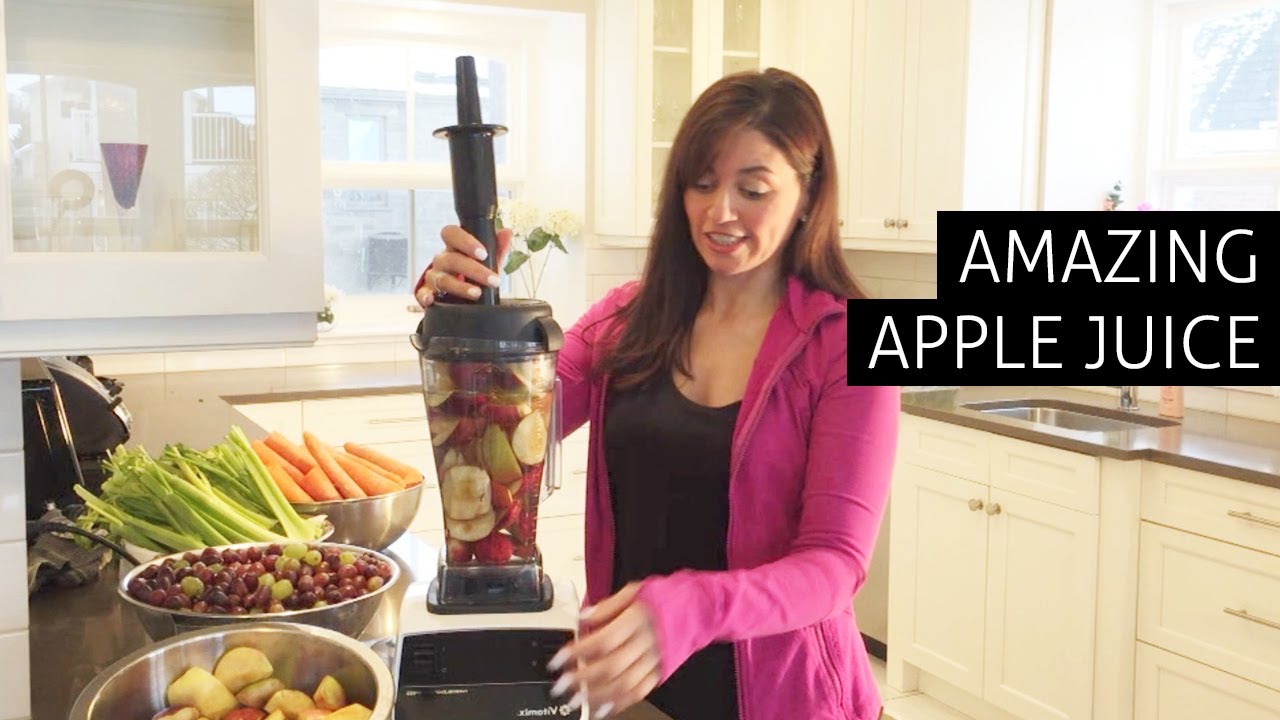
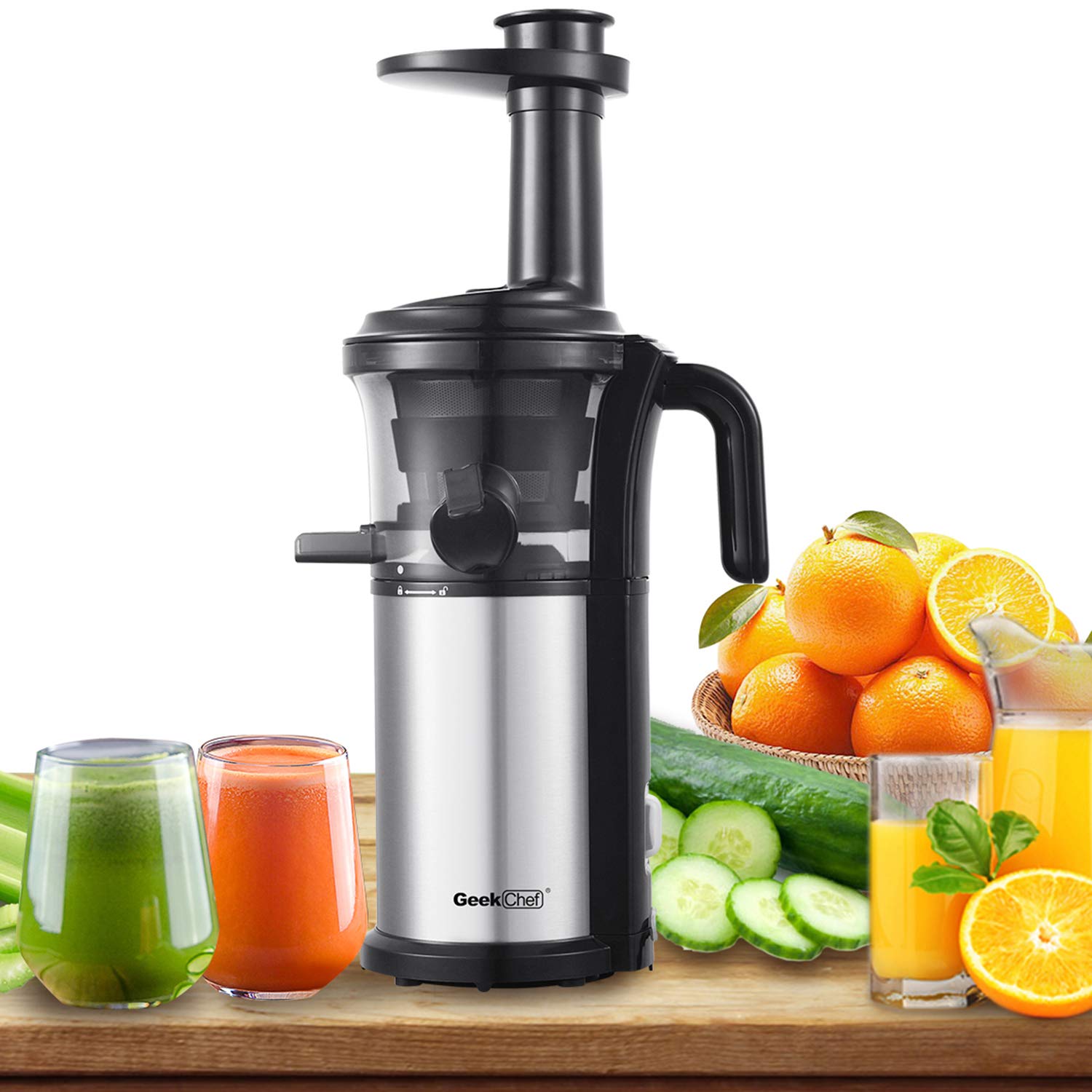
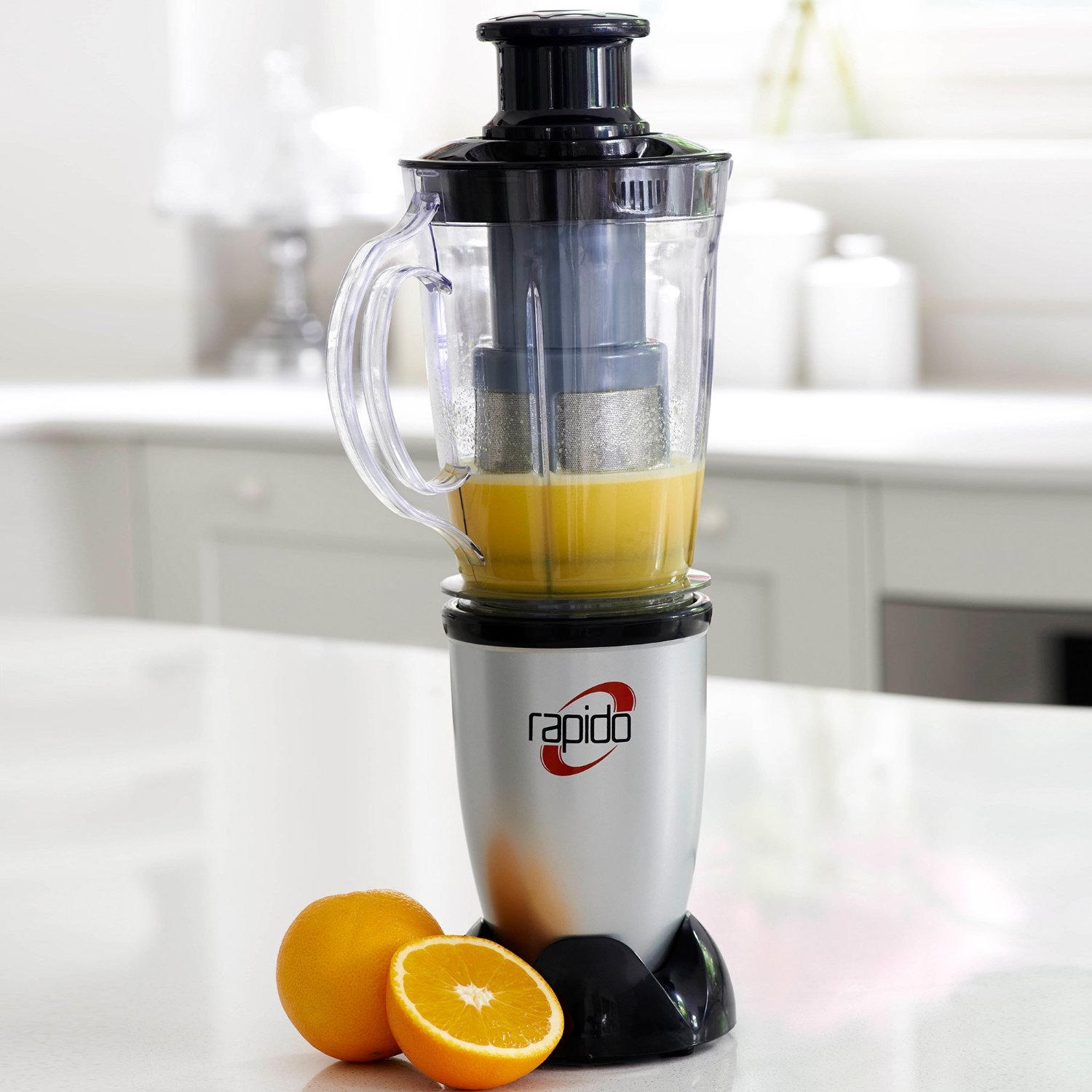

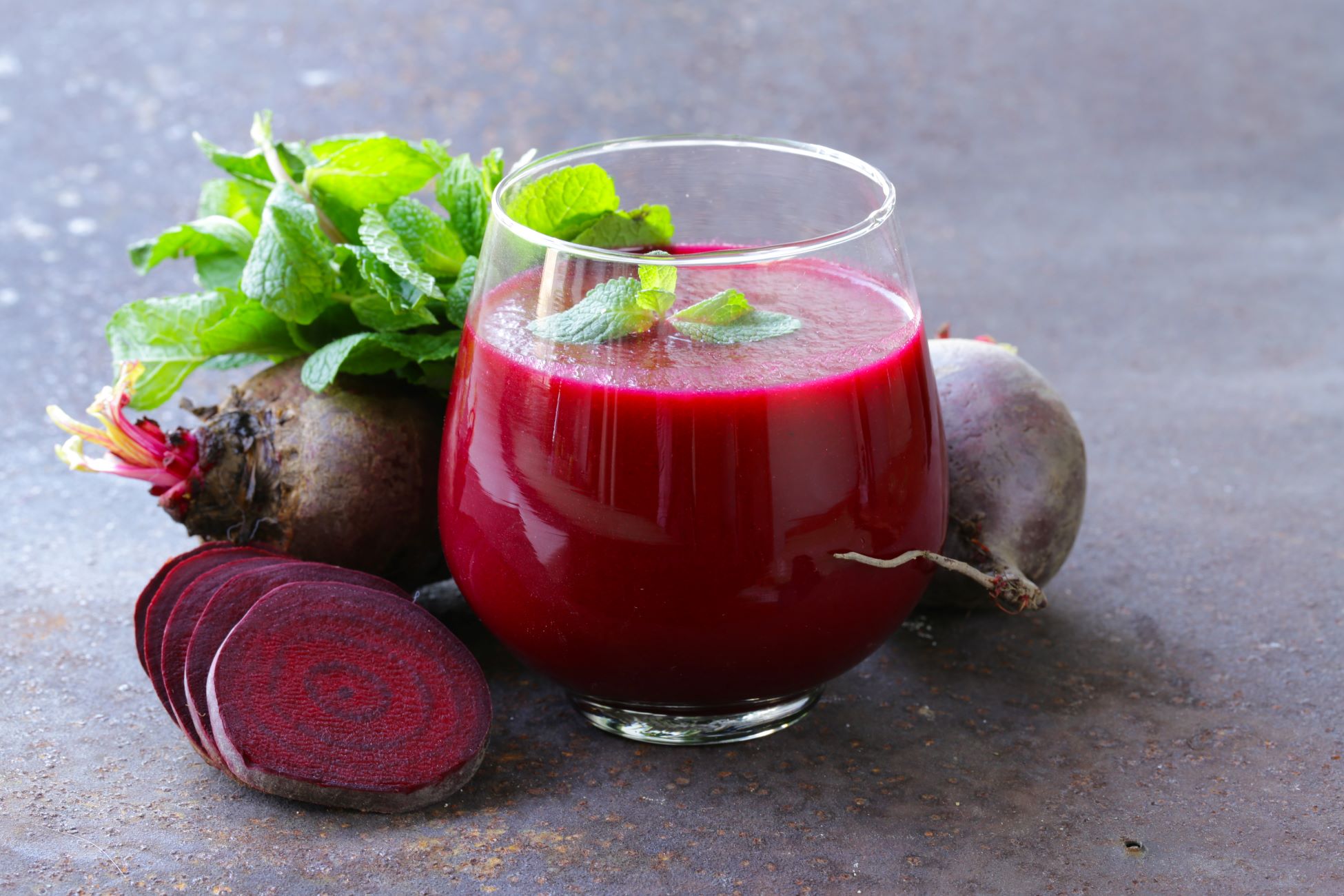
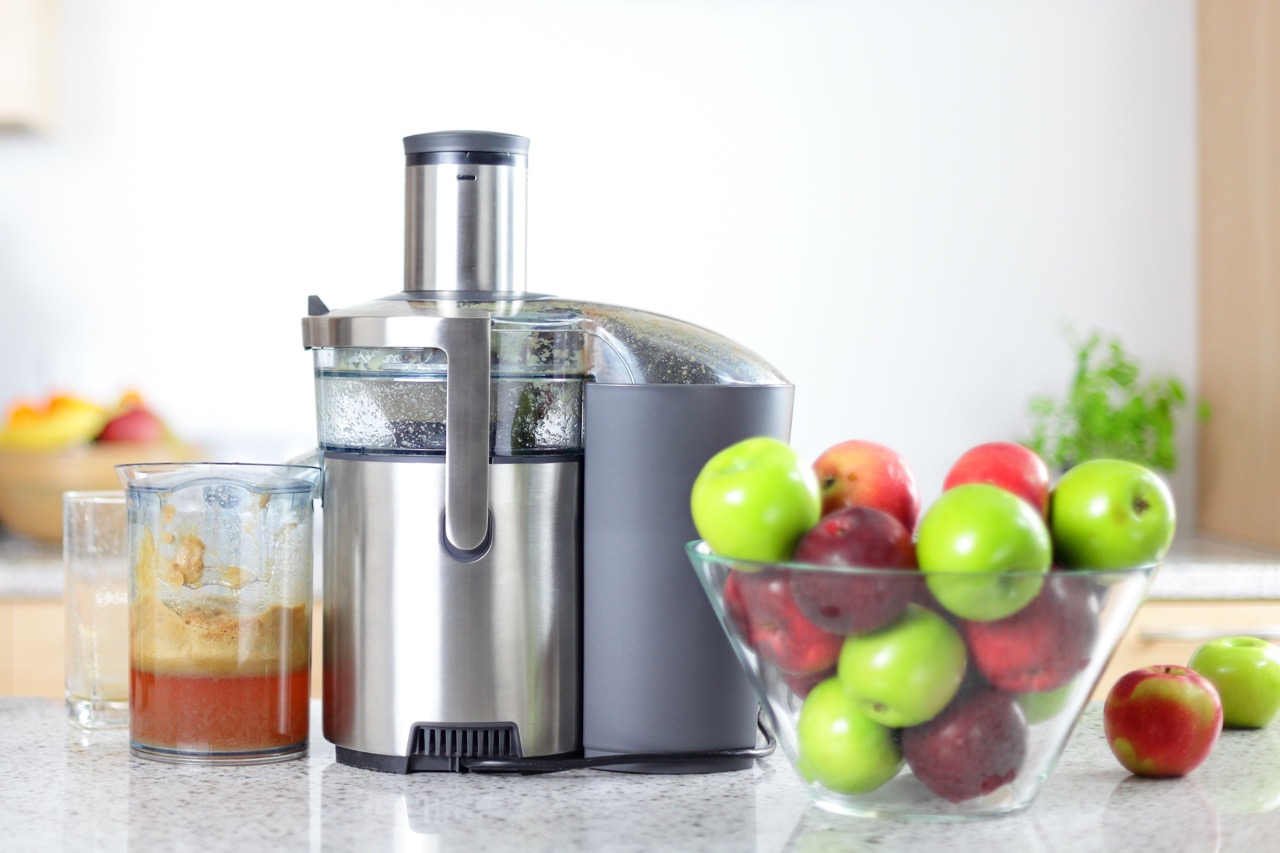

0 thoughts on “How To Make Beet Juice With A Blender”